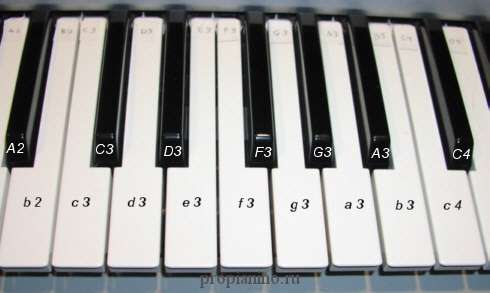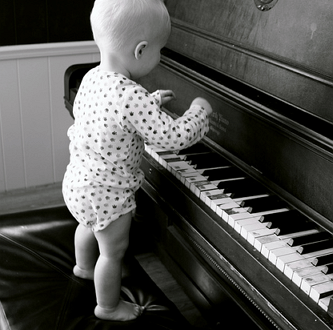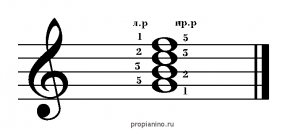
Piano tablature
Tablature is a type of instrumental notation. Simply put, a way of recording musical works, alternative to musical notation. “Tab” is an abbreviation for tablature, which you’ve probably heard before. They are musical schemes, consisting of letters from numbers, and at first will seem to you a Chinese letter. In this article we will try to figure out how to read keyboard tabs.
In a typical piano tablature, notes are written on several horizontal lines. Here, for example, a simple example of a keyboard tab is the F major scale.

The history of taba begins with the recording of compositions for the organ. Organ tablature has been known since the end of the 14th century, and the Buxheimer Organ Book (1460) is considered one of the earliest sources of this musical knowledge.
Intabulation is, in fact, the processing of a vocal work into a taboo. New German tablature differed significantly from others. It was also written using letters and special characters. Each voice in such a recording consisted of three elements – the name of the note, its duration and its octave. Notes of individual voices were written vertically. Such tablature is very compact, so there was no need to specify the key and accidentals.
Tablature is not only a keyboard. Using this universal method, notes are recorded for playing the guitar. In turn, the lute served as the basis for the guitar tablature. Here the horizontal lines represent the strings of the guitar, and the fret numbers represent the notes, they are arranged in sequence.

As already mentioned, letters, numbers and symbols are used to compose keyboard tabs. You need to read them like a book – from left to right. Notes located one above the other on different lines are played simultaneously. Now consider the basic notation of tablature:
- The numbers 3,2 and 1 indicate the number of the octave. Please note that in the middle of the keyboard itself is the third octave.
- Lowercase letters denote the name of whole notes. On the keyboard, these are white keys, and in the tab – the letters a, b, c, d, e, f, g.
- Large capital letters A,C,D,F and G denote sharp notes. These are the black keys on the keyboard. In fact, to make it clearer, these are a#, c#, d#, f# and g#. Initially, it was written that way, with a sharp sign before or after the letter, but to save space, it was decided to replace them with capital letters.
- From the very beginning, there can be confusion with flats. In order not to confuse the sign “flat” with the note “si” (b), instead of notes with flats, they write the corresponding ones with sharp. For example, instead of Bb (“B flat”), A (“A sharp”) is used.
- Sign “|” are the boundaries of the beats
- The “-” sign indicates the pauses between notes, and “>” – the duration of one note
- The letters above the tablature itself indicate the names of the chords
- Designation “RH” – you need to play with your right hand, “LH” – with your left
In principle, after reading this instruction, the first understanding of what tablature is should emerge. Of course, in order to learn how to read tabs quickly and on the go, you need more than one month of constant practice. However, you already know the main points and nuances.
And here’s a dessert for you – the melody from the movie “Pirates of the Caribbean”, played on the piano, perfectly inspires you to comprehend the tablature literacy and musical achievements!




